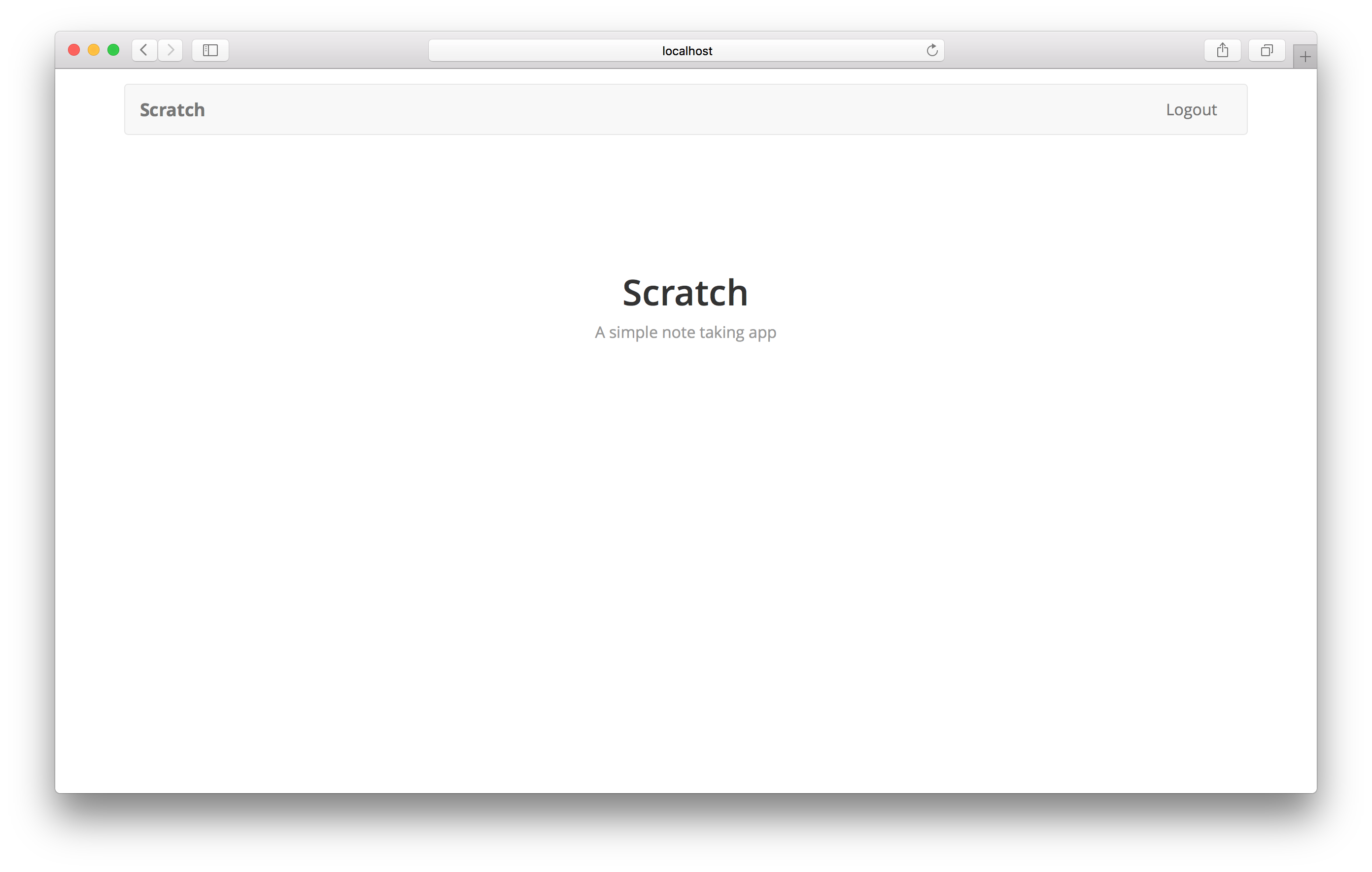Signup with AWS Cognito
Now let’s go ahead and implement the handleSubmit and handleConfirmationSubmit methods and connect it up with our AWS Cognito setup.
 Replace our
Replace our handleSubmit and handleConfirmationSubmit methods in src/containers/Signup.js with the following.
handleSubmit = async (event) => {
event.preventDefault();
this.setState({ isLoading: true });
try {
const newUser = await this.signup(this.state.username, this.state.password);
this.setState({
newUser: newUser
});
}
catch(e) {
alert(e);
}
this.setState({ isLoading: false });
}
handleConfirmationSubmit = async (event) => {
event.preventDefault();
this.setState({ isLoading: true });
try {
await this.confirm(this.state.newUser, this.state.confirmationCode);
const userToken = await this.authenticate(
this.state.newUser,
this.state.username,
this.state.password
);
this.props.updateUserToken(userToken);
this.props.history.push('/');
}
catch(e) {
alert(e);
this.setState({ isLoading: false });
}
}
signup(username, password) {
const userPool = new CognitoUserPool({
UserPoolId: config.cognito.USER_POOL_ID,
ClientId: config.cognito.APP_CLIENT_ID
});
const attributeEmail = new CognitoUserAttribute({ Name : 'email', Value : username });
return new Promise((resolve, reject) => (
userPool.signUp(username, password, [attributeEmail], null, (err, result) => {
if (err) {
reject(err);
return;
}
resolve(result.user);
})
));
}
confirm(user, confirmationCode) {
return new Promise((resolve, reject) => (
user.confirmRegistration(confirmationCode, true, function(err, result) {
if (err) {
reject(err);
return;
}
resolve(result);
})
));
}
authenticate(user, username, password) {
const authenticationData = {
Username: username,
Password: password
};
const authenticationDetails = new AuthenticationDetails(authenticationData);
return new Promise((resolve, reject) => (
user.authenticateUser(authenticationDetails, {
onSuccess: (result) => resolve(result.getIdToken().getJwtToken()),
onFailure: (err) => reject(err),
})
));
}
 Also, include the following in our header.
Also, include the following in our header.
import {
AuthenticationDetails,
CognitoUserPool,
CognitoUserAttribute,
} from 'amazon-cognito-identity-js';
import config from '../config.js';
The flow here is pretty simple:
-
In
handleSubmitwe make a call to signup a user. This creates a new user object. -
Save that user object to the state as
newUser. -
In
handleConfirmationSubmituse the confirmation code to confirm the user. -
With the user now confirmed, Cognito now knows that we have a new user that can login to our app.
-
Use the username and password to authenticate the newly created user. We use the
newUserobject that we had previously saved in the state. Theauthenticatecall returns the user token of our new user. -
Save the
userTokento the app’s state using theupdateUserTokencall. This is the same call we made back in ourLogincomponent. -
Finally, redirect to the homepage.
Now if you were to switch over to your browser and try signing up for a new account it should redirect you to the homepage after sign up successfully completes.

A quick note on the signup flow here. If the user refreshes their page at the confirm step, they won’t be able to get back and confirm that account. It forces them to create a new account instead. We are keeping things intentionally simple here but you can fix this by creating a separate page that handles the confirm step based on the email address. Here is some sample code that you can use to confirm an unauthenticated user.
However, while developing you might run into cases where you need to manually confirm an unauthenticated user. You can do that with the AWS CLI using the following command.
aws cognito-idp admin-confirm-sign-up \
--region us-east-1 \
--user-pool-id YOUR_USER_POOL_ID \
--username YOUR_USER_EMAIL
Just be sure to use your Cognito User Pool Id and the email you used to create the account.
Next up, we are going to create our first note.
If you liked this post, please subscribe to our newsletter and give us a star on GitHub.
For help and discussion
Comments on this chapterFor reference, here is the code so far
Frontend Source :signup-with-aws-cognito